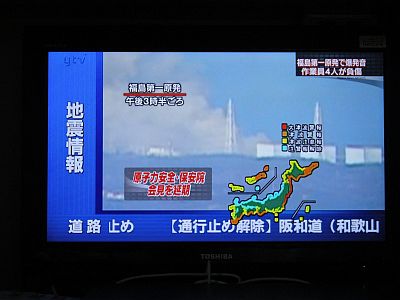What is the 'Waffle House Index,' which judges the damage situation in disaster-stricken areas based on whether chain stores are open?

By
In order to provide appropriate support during a disaster, it is very important to understand the damage situation in the affected area. The Federal Emergency Management Agency (FEMA), a government agency that responds to disasters, uses the ' Waffle House Index ,' which colors a map based on the business status of the restaurant chain Waffle House , as an unofficial indicator to grasp the damage situation.
How Waffle House Manages to Stay Open Through Disasters Like Hurricane Dorian (and What Other Businesses Can Learn) | Inc.com
https://www.inc.com/jessica-stillman/waffle-house-stay-open-hurricane-dorian.html
Waffle House Index helps Southerners and FEMA judge a hurricane's severity | AP News
https://apnews.com/article/waffle-house-index-hurricane-milton-e0547ca1fb11ddcadab50035a0da7819
Waffle House is a 24-hour restaurant chain headquartered in Georgia, USA, with over 1,900 stores in 25 states, mainly in the southern and mid-Atlantic coasts of the United States. Waffle House is known for being disaster-resistant, and will continue to operate by limiting its menu even if normal business hours are not possible.
FEMA's unofficial indicator that measures the damage level based on the business status of Waffle House restaurants is called the Waffle House Index. Waffle House restaurants in disaster-stricken areas are color-coded as 'green' if all menu items are available, 'yellow' if they are open with limited menu items, and 'red' if they are closed, so that it is possible to see which areas have suffered damage that would hinder Waffle House business.
At first glance, this may seem like a ridiculous theory, but for people in the southern United States, where hurricanes are common, and for federal government officials, the Waffle House Index is one way of understanding the extent of damage. When Hurricane Helen struck the southern United States in late September 2024, 20 Waffle House stores in the Carolinas and Georgia remained closed two weeks after the disaster, and stores open in other areas were only offering limited menus. This shows how severe the damage in those areas was.

by atmtx
Originally, people in the Southern US noticed that Waffle House was often the only restaurant open during a hurricane or one of the first to open after the hurricane had passed.
The Waffle House Index was first created by former FEMA Administrator Craig Hugate , who was leading emergency management for the state of Florida in 2004 and was looking for places to eat while surveying disaster areas after a hurricane.
He found that some Waffle Houses were closed, but that some were still open with limited menu items in areas where power and water had not been restored. He eventually found that the color-coded map of Waffle Houses' business status was a useful indicator of where damage was most severe. He continued to use the Waffle House Index even after he became FEMA administrator in 2011.
In response to this, Waffle House also announces the operating status of its stores on social media during disasters such as hurricanes.
Thank you to our Operations Team for working tirelessly to be there for the communities impacted by Helene.
— Waffle House (@WaffleHouse) October 4, 2024
Here are the updated unit status maps. For address information, please visit: https://t.co/n2HQyQmVc2 #whindex #hurricanehelene pic.twitter.com/srmNpMmni6
It's no coincidence that Waffle House is disaster-resistant. Waffle House has learned from past data that stores that reopen immediately after a disaster see a sharp increase in sales, so the company has adopted a business strategy that intentionally allows stores to remain open during and immediately after a disaster. For this reason, stores are equipped with portable generators in preparation for power outages, and 'jump teams' are also available for disaster response.
The jump team is made up of contractors, construction workers, gas line specialists, restaurant operators, food providers, and other relevant parties. At Waffle House, the vice president in charge of the area serves as the on-site leader, reporting the situation in the affected area to headquarters, and has a system in place to send a 'jump team' to the scene if headquarters deems it necessary.
Store owners and employees in disaster-stricken areas find it difficult to work during or immediately after a disaster, as they must evacuate with their families or help repair and restore their homes. In the meantime, jump teams are sent from headquarters to take over operations of the stores, and the stores are set up to resume business immediately after the disaster.
Related Posts:
in Note, Posted by log1h_ik







